Using the Sun as a probe for dark matter
Many experiments on Earth analyze, by means of dedicated telescopes, the flux of neutrinos originating from space. I have recently read an interesting article, available here, where it is explained that the exact same experimental setup could be used for dark matter studies.
This stems from the idea that dark matter phenomena could happen inside our Sun.
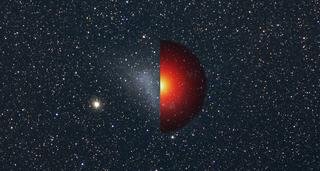
[image credits: NASA]
With this blog post, I will first briefly come back to the concept of dark matter, and I will in particular spend some time on how dark matter could be detected on Earth.
Discussing the physics behind these dark matter experiments, I will move on with how this could be linked to our Sun and involve neutrinos.
Of course, I will also say a few words about neutrinos.
DARK MATTER IN A NUTSHELL
The identification of dark matter is one of the most urgent question currently addressed in particle physics and cosmology. The motivations behind this concept of dark matter are indeed numerous: a large set of data from varied experiments pushes for the existence of dark matter.

[image credits: APOD @ NASA]
Dark matter was initially introduced to explain galaxy rotational curves. This relies on the confrontation of how stars orbit inside galaxies to predictions made on the basis of Newtonian mechanics.
Both mismatch, except if we introduce some mysterious invisible mass. This mysterious mass is what is known today as ‘dark matter’ and the galaxy rotational curve issue is actually the reason for the dark matter name.
The wording ‘dark matter’ indeed comes from the fact that dark matter interacts gravitationally, like common ‘matter’. It is in contrast insensitive to electromagnetism, and thus ‘dark’, by opposition to electromagnetism being connected to light.
In addition, dark matter nicely explains the formation of large-scale structure in the universe, gravitational lensing, the cosmic microwave background, and even more.
As a side note, alternative theories where there is no dark matter are viable too, as there is so far no direct evidence for dark matter. This is by the way another reason why dark matter lies at the core of the current experimental program in high-energy physics.
DARK MATTER DIRECT AND INDIRECT DETECTION
There exist several dark matter direct experiments, located at different locations on Earth, that are all trying to observe dark matter via its direct interactions with protons and neutrons that are the basis of all form of matter on Earth.
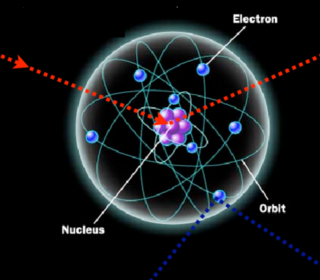
[image credits: InSpire]
In those events, we measure the recoil of an atomic nucleus when it is hit by a dark matter particle.
This is very rare, as dark matter only interact very weakly with any form of matter (otherwise, it would not be called dark matter after all).
However, if we choose a detector that is large enough and take data during a long enough period, we can record a bunch of those events and distinguish them from the background.
Another way to try to observe dark matter is by detecting the fluxes of visible particles arising from dark matter annihilations occurring elsewhere in the universe.
By studying the properties of what we observe, there are ways to come back to the properties of dark matter.
One important point here is that dark matter direct and indirect detection experiments rely on the fact that dark matter interact, even if it is very weakly, with standard matter.
DARK MATTER INTERACTIONS IN THE SUN
The mechanism that is behind the dark matter direct detection experiments consists of the interaction of dark matter with atomic nuclei. This also has a consequence on our Sun: dark matter particles can be captured, once in a while, by the Sun.
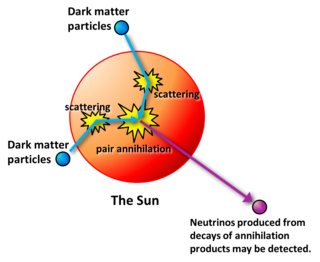
[image credits: Super-Kamiokande]
When enough dark matter particles are captured by the Sun, two of them can meet each other and annihilate. This is the same phenomenon as the one behind dark matter indirect detection, by the way.
As the Sun is full of matter, only the neutrinos produced in these reactions are capable to escape the Sun. Any other particle would indeed react quickly enough with the Sun constituents so that it becomes impossible to trace back what happened.
NEUTRINOS AS VECTOR FOR DARK MATTER ANNIHILATION IN THE SUN
Neutrinos are particle of the Standard Model of particle physics that only interact very weakly with any other form of matter (as dark matter, by the way).
They have been introduced at the time radioactivity was discovered, when physicists were studying how one given type of atomic nucleus would transform into another species of atomic nucleus.
This is illustrated in the picture on the left, where one can see that such an interaction is accompanied by one electron and one extra invisible guy, a neutrino.
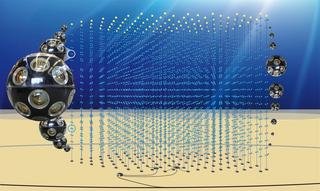
[image credits: Wikipedia]
Coming back to the topic, neutrinos are very weakly interacting so that they can escape the Sun unaltered when produced from the annihilation of two dark matter particles.
Studying the properties of the neutrinos could thus provide handles to constrain dark matter and its properties. We always study some effects to come back to the cause.
TAKE HOME MESSAGE AND REFERENCES
Dark matter is widely motivated by varied experimental results. As a consequence, physicists are fighting hard to detect it on Earth, and there are two classes of such experiments.
Direct dark matter detection relies on measurements of the recoil of an atomic nucleus when it would be hit by a dark matter particle. Indirect dark matter detection on the other hand relies on the measurement of the properties of the decay product, observed on Earth, of two dark matter particle that would annihilate somewhere in space.
These two phenomena also imply that dark matter can be captured by the Sun and annihilate inside it. Such a process would leads to a flux of neutrino, coming from the Sun, that could be detected on Earth.
As a results, neutrino fluxes coming from the Sun can be used as probes for dark matter!
For more information about this way of constraining dark matter, I refer to this article that I have read last week. I have written a couple of Steemit posts on dark matter and neutrinos, so that more information and references can be found on my blog.
For more discussion on this topic (or anything related to science), please join us on steemSTEM. SteemSTEM is a community driven project which seeks to promote well written/informative Science Technology Engineering and Mathematics postings on Steemit. More information can be found on the @steemstem blog.
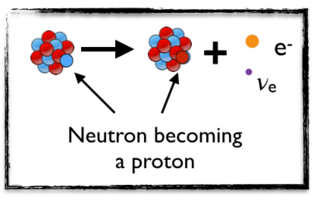
The observation of annihilation relies on dark matter being constituted of unknown and maybe supersymmetric neutrinos, right?
But could Dark Matter also be due to some yet unknown extension of the Standard Model or is there some fundamental argument saying that there can't be anything beyond the Standard Model?
The exact nature of dark matter (DM) does not enter into the game here. Predictions from DM-originating neutrinos from the sun only relies on the fact that dark matter can annihilate into Standard Model particles, and that dark matter can interact with protons and neutrons. These properties are there for any DM model.
Now, let's assume that one would observe nothing (which is the case at the moment). We can thus invert the problem and constrain the various dark matter models that are on the market by confronting predictions to null results.
Sneutrinos candidates are one option among others, but you need some non-minimal supersymmetric model (in the minimal supersymmetric extension of the Standard Model, sneutrinos DM are ruled out by data). Nothing too crazy actually, like left-right supersymmetry or supersymmetry with a fifth force.
The Standard Model does not explain dark matter. Therefore, you need to go beyond the Standard Model and complement it by at least a DM particle, and some mechanism connecting the DM particle to the Standard Model. That is the minimal way. Of course, most models are by far not minimal :p
Don't hesitate to come back to me if you have any further question.
PS: I still don't know your institute :p
hello, dear @lemouth, Where does the dark matter in the Universe come from?
Well, this we don't know. We actually do not even know whether there are dark matter in the universe. It is for the moment only hypothetical. But this is an hypothesis that works extremely well :)
a hypothesis must be proven by research, and then to know that we must use what approach. and also want to examine what there is dark mesteri? and I in this case I will search for the concept of alqu'an about the dark mystery first
I am not sure to have fully understood your comment. Don't hesitate to ask more of my answer is not satisfactory.
Well, this is why we have so many dark matter experiments. Indirectly, the presence of dark matter is well motivated. We are however lacking any direct observation. This is not easy and challenging. Hopefully, we will know more in the future.
Why assume neutrinos originate from dark matter annihilation and not from known nuclear reactions within the sun?
Both processes are there, of course, but the neutrinos coming from nuclear reactions and dark matter annihilation have different properties. In particular, the energy of the would-be detected neutrinos originating from dark matter is expected to be much higher than the typical energy of the neutrinos issued from nuclear reactions. Detecting such neutrinos would then be a clear sign of something new. We have not seen any up to now.
This comment has received a 30.00 % upvote from @upgoater thanks to: @stimialiti.
Interesting mystery well explained.
What is thought to happen to ordinary matter when dark matter reacts with it?
Dark matter can collide with atomic nucleus and be scattered away. This consists actually of the principle of direct dark matter detection where one measures the recoil of the atomic nucleus to get back to the initial dark matter particle
So it's just a very small transfer of momentum to the nucleus of an atom, not much else, if even that. What kinds of atoms are used?
Since electrons are hundreds and thousands of times lighter than a nucleus, couldn't it knock away an outer electron, making the atom an ion?
Dark matter wind, but not aether wind, hmmmmmmm.....
More or less small. This is model dependent and it depends on the used nuclei. The nuclear recoil is in the range of 1 to 100 keV, give or take. There are many examples of detectors, using for instance noble gases (Xenon in particular), Germanium. etc.
The expected recoils are also large for electrons. See the more detailed answer below :p
it is more the solar system moving inside the dark matter clouds in our galaxy (that can be seen as a wind from the Earth standpoint.
It sounds like dark matter has is more than enough momentum to knock loose an electron and continue on only slightly deviated from it's course, unless it ignores electrons. But then I'm definitely no expert on dark matter.
Is there any estimate of the velocity of the dark matter wind or is it just the motion of earth through the Milkyway?
How big are the dark matter clouds?
Is the dark energy stored in the energy of dark matter?
So many questions :)
I have checked the the literature as I didn't know much on this too. Dark matter - electron scattering is also possible. Dark matter candidates heavier than the proton mass, using nuclear recoil makes a detection much more easier. For lighter dark matter, dark matter - electron scattering become an option. There are actually results, and constraints.
There are very big. There are about 5-6 times more dark matter in the universe than visible matter.
Dark energy and dark matter consist of two different ingredients of the universe energy budget.
Thanks for the well thought out educated answers.
v ~ c/1000
Answers and information always lead to more questions.
Dark Energy and Dark Matter are pretty weird stuff.
Wow, Thanks for this article. The last time I heard dark matter was maybe in college. Now I have more knowledge on it. Thanks for the post.
My pleasure! Dark matter is still a very hot topic in today's high-energy physics research. Questions still need to be answered.
I was think about sending you these 2 studies that were published this month and which I saw yesterday. I was wondering if you had heard of them and what are your first impressions. Here's an article about them. Link to the studies are provided at the bottom of the article.
Astronomers Have Finally Found Most of The Universe's Missing Visible Matter
Probably a better article about the subject.
Half the universe’s missing matter has just been finally found
Thanks a lot for the references. I hadn't read it before you mentioned them to me. I actually read the original articles that were available here and there.
There are very nice studies. They actually confirm standard cosmology. In this context, 4-5% of the universe consists of normal matter. However, only half of that was observed today. The other half consists of filament of gas linking all the galaxies together (like a kind of web). These studies have measured independently the quantity of matter included in these filament, and the results agree with standard cosmology (still with very significant error bars).
Have I answered, or do you want more details?
I hadn't even realize the studies where talking about the visible 4-5%.
My brain had mess up that part when I read. Thank you for clarifying that part and I feel privilege to be able to ask you questions about science.
I won't ask many questions but from time to time I'll probably try to come up with good ones.
Please do ask question anytime! I am always happy to answer them. For instance, this question allowed me to learn something I didn't know, and I am thanking you for that ;)
Furthermore, I think that I will write one of my next posts (maybe the next one just to keep the momentum) about that topic. It is very interesting, and not that known ;)
That is some great explanation about dark matter and surrounding facts.
I had no idea we can probe for dark matter using neutrinos emanating from the sun!
Thanks for sharing !
It actually works too with gamma rays. Slightly more complicated, but doable :p
that is worth another article i suppose :D !
Maybe one day ;)
Particle physics is indeed very interesting. I hope there'd be progress about this dark matter thing as soon as possible. I'd love to read it.
The first progress being to find it, of course :)
I mean, more progress :D
Of course ^^
I’ve always thought that dark matters were hypothetical and only existed in theory. I guess I was absolutely wrong. There are really many things I’m yet to learn. Thanks for sharing
No you were correct. Dark matter is only one possible ways to explain observations. There are alternatives.
OK. Thanks for the enlightenment
My pleasure!
I'm actually more bullish on the idea of Neutrinos than on all the other experiments I know of trying to measure dark matter. Because gravity is so weak I'm biased towards the idea of using the giant fusion reactor as a tool.
Well, neutrinos exist for sure. For dark matter, it is less sure (as said elsewhere, there are theoretical options in which there is no dark matter). Here, the interesting part is to use neutrino experiments to constrain dark matter models. We have a dark matter experiment for free, in some sense ;)
Oh, geez. I'm such an idiot! of course, neutrinos exist. I was trying to mean high energy neutrinos that as evidence would support the hypothesis of resulting from dark matter annihilation. I was lazy and said something dumb, didn't realize until I read your response. Yeah, the "free" part is also cool.
I answered something... and my answer disappeared! Damned....
So, I was saying that we have actually results on this. High-energy neutrino data is analyzed, and we have not found any sign of dark matter in it. As a result, we can only constrain dark matter models. It is not as exciting as a discovery, but still, we can learn something from that :)